Libya

For his first Batjac production based outside the U.S., John Wayne boarded the French Liner Liberte on May 10, 1956, in New York. The ship had been the replacement for the legendary SS Normandie that was lost during World War II. Now the SS Liberte was the flagship for CGT French Line. For Wayne, the filming of the adventure yarn Timbuktu, working title of Legend of the Lost , was a good excuse for a holiday, European style.
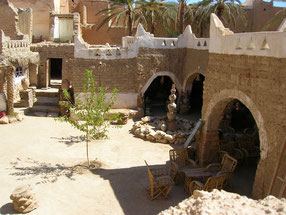
Ghadames in Northwestern Lybia was the headquarters of the Batjac/Dear Films Produzione. It is one of the oldest pre-Saharan cities. The rustic town was an oasis situated at the center of an ancient camel route leading to Tripoli and the sea. The Batjac crew had organized the preliminary work. Outside Ghadames, they built a tent city for the crew workers. Wayne had shipped a boatload of surplus Army junk from Hollywood to the port of Genoa in Italy. Wheelus Air Force Base on the coast of Tripoli was asked for assistance in logistics, then the largest US military facility outside the US, today Mitiga International Airport (photo courtesy of Tidwa Travel).

Every morning, the Batjac caravan set out on a two-hour journey to the shooting location. It was twenty below zero when they got started in the dark. The trucks’ engines were always frozen and had to be started by putting flaming torches under the engines. The road was a dusty track on which at least one truck always sunk axle-deep in the sand and had to be dug out.

When they finally got all the desert scenes in the can, they moved to the sea. Henry Hathaway (pictured here with Sophia Loren) shot all the “Timbuctoo” scenes that set up the story in the town of Zliten, east of Tripoli. Zliten has been targeted in the Lybian Civil War by terrorists.
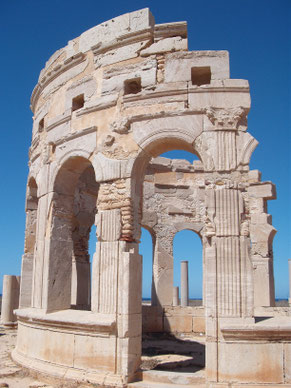
The company moved on to the ancient Roman port of Leptis Magna, the film’s visual highlight. Leptis Magna was called one of the jewels of the Kingdom of Lybia (photo courtesy of Tidwa Travel).

The roman ruins are actually based by the sea, but the film makes Leptis Magna the lost city in the middle of the Sahara.
Tanzania

John Wayne returned to the African continent for Hatari! Principal photography started November 28, 1960. The basic location was Momella in today’s Tanzania (former Tanganyika). Wayne's tracks can still be found. He claimed the time he spent on this location was the most fun he’d had on any picture. In a TV interview in 1976, he named Hatari! one of his all-time favorites „because I had a three-month safari free“.
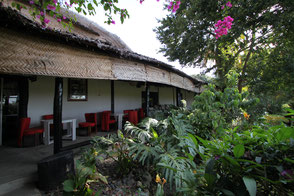
The “Momella Game Ltd” farm as it was called in the movie was complete down to the last detail. They didn’t have to build the main house though. It was rented from their famous tenants, the Trappe family. The animal cages were added.
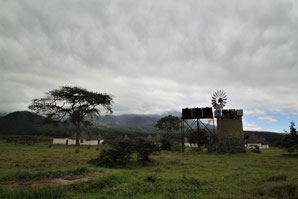
Hardy Kruger instantly fell in love with Momella. Kruger made a deal with the landowner, Rolf Trappe, and went into partnership with Jim Mallory. In November 1961, they opened the Momella Lodge, which was built on the very same compound. That's the old windmill you recognize from the movie.

Relaxing in the living room of the Big Game hunters - the fireplace, built with stones from Ngare Nanyuki....
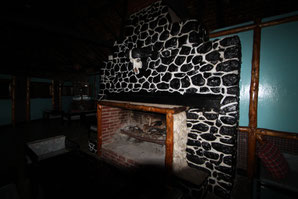
...is still the centerpiece of the lodge (they used the same stones to to recreate the fireplace for the scenes shot later on Paramount stage).

Gerard Blain watched his rival kiss the girl from this doorway...

...right here.

Elsa Martinelli ran after Red Buttons, without her pants...
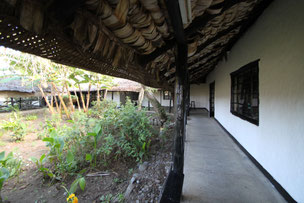
...from this guesthouse at Momella.

And John Wayne's team sceptically awaits the arrival of "Chips" on this porch...

...which looks a just a little bit greener today but is the same angle though.
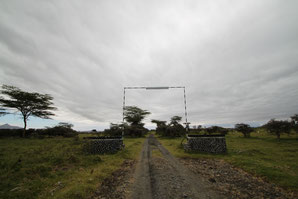
Eventually, Hardy Kruger would live at Momella for thirteen years. After he finally left Africa, the Momella Lodge was in a perpetual state of disrepair for a long time, but it still exists, on Momella Road. This is the entrance as it looks today...

...just like in the days when Hardy drove his jeep through the stone gate in the movie.

Another hotel opened next to the Momella Lodge, that venue is called the Hatari Lodge and utilizes the former homes of Mallory and Kruger for accommodations. This wall in the dining room is decorated with Hatari mementos.

The waterhole Elsa Martinelli washes the elephants in is actually accessible by foot from Momella Lodge just like the movie suggested...
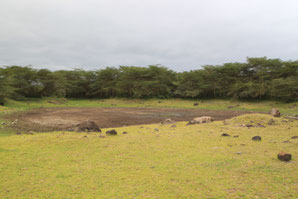
... and can still be found, although dried up most of the year. This photo was taken from the exact same spot.

What the natives accurately call “John Wayne Rock,” where Sean Mercer is leaning against, watching "Dallas" wash the elephants...
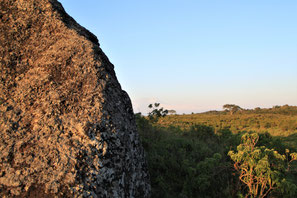
...is an easy find in the same waterhole area.

John Wayne bonded with his younger co-stars in his typical bombastic way. It was on the lofty Lake Manyara Hotel (top right in the picture) overlooking hordes of flamingos, that Wayne told Hardy Kruger over dinner, “Kid, afterwards we’re gonna have a drink at the bar.” Kruger won the drinking contest, having the advantage of having drunk oil as a precaution. By the next day, Wayne was nonplussed by his “defeat.” As usual, he was first on the set and he handed Kruger a cup of coffee, saying, “You’re gonna need that.”
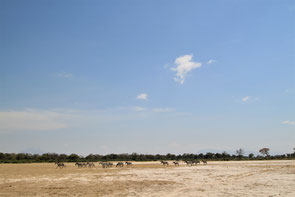
During the stay at Lake Manyara, Hawks shot the scenes with giraffes and zebras on the Lake Manyara Plain, a flat dry salt lakebed, twenty miles wide and some fifty miles long.

Production got permission to shoot in the sacred Ngorongoro Crater, the bottom of which had only recently become accessible by vehicle.

They were allowed to film the chasing rhino - but not actually catch one. The natural wonder of the crater in the Ngorongoro Conservation Area, 110 miles west of Arusha, is accessible today via the same road used by the filmmakers.

The white plains on which the rhino is caught in the film’s climax...
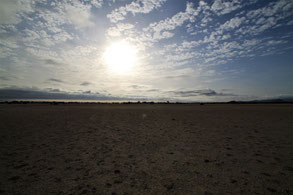
...are called the Seven Sisters (accurately named in the dialogue), close to the Kenyan border. The crew lived in a camp at Longido for these sequences.

The shot in which John Wayne hides in high grass and beckons the car...
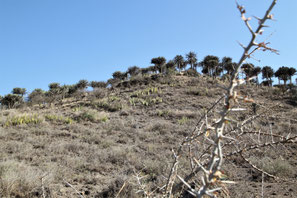
...is a rare eucalyptus forest just off the A104 between Longido and Arusha.
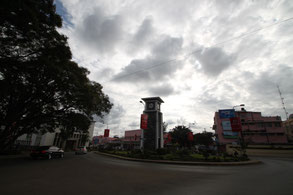
The landmark of Arusha, headquarter of Howard Hawks' production, is the clock tower, seen in several shots.

At this roundabout in the middle of Arusha, the shop into which Tembo pursues "Dallas"...
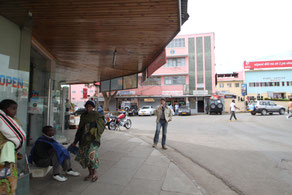
...is still in business: the Clock Tower Supermarket.
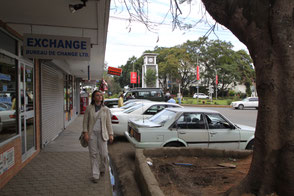
In the back of the supermarket: this is the spot where "Dallas" flees out back.

Note the Clock Tower in the background.

The Lutheran church, visible in the background when the men hand over Dallas’ clothes on the street, is on Goliondoi Road.

Furnished private homes were rented for Hawks and Wayne while mose of the cast and crew were housed at the Arusha Hotel and the Safari Hotel. The now called New Safari Hotel is the place where the baby elephants finally catch up with "Mama Tembo", on Boma Rd. The hotel underwent major reconstruction yet the entrance is virtually unchanged.

The world premiere was held at the Egyptian in Hollywood, June 19, 1962, a full year after shooting wrapped.
©All text content on this website is protected by copyright and other intellectual property laws. No part may be reproduced without the prior written permission. All photos courtesy of Roland Schaefli, unless otherwise stated.
This website is in no way associated with the John Wayne Estate or business enterprises. Go to johnwayne.com to find the official website and to https://johnwayne.org/ to read about the wonderful John Wayne Cancer Foundation.
more john wayne locations to scout
If you like this site, you'll like the book: the first comprehensive guide to the John Wayne Locations, with hundreds of then-and-now photos, unpublished behind-the-scenes-pictures and detailed tour descriptions
Tracking John Wayne: The complete Tourguide
Find directions to locations and anecdotes from the Duke's movie sets in this new publication from McFarland, available at bookstores and online shops
For all locations mentioned on this website, the book offers behind-the-scenes stories, making-of anecdotes and never before published photos

